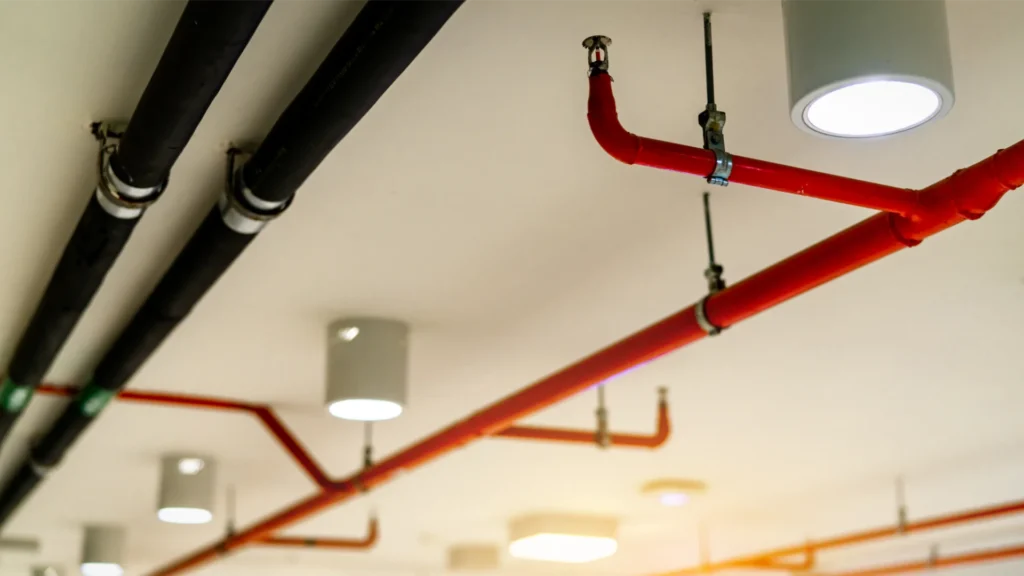Fire safety in Sydney isn’t merely the matter of ticking the boxes for compliance. The Annual Fire Safety Statement, also known as AFSS is the heart of this system. The AFSS not only satisfies all legal requirements but shows a property owner’s dedication to safety and responsibility. The annual Fire Safety Statement (AFSS) is the nexus of the system. It is not just a way to meet legal requirements, it also displays a building’s dedication to safety and accountability.
What is the reason for an annual Fire Safety Statement
The Annual fire safety statement Sydney requirement was never designed to be paperwork for the sake of paperwork. The requirement was created because regardless of how effective the fire protection system built, it will only work if it is regularly inspected, maintained and certified. Sprinklers constructed ten or more years ago may look nice, but they may not work in an urgent situation in the event that they’re not checked.

The AFSS requires that property owners demonstrate at least once every 12 months the fire safety measures in their property–from alarms, hydrants and lighting at the exits — still meet the requirements originally laid out in the Building Code of Australia (BCA). The AFSS does not just serve as an inspection, it is a publicly-proclaimed declaration of the safety and durability of the building in the in the event of a major catastrophe.
The Difference Between AFSS and Fire Safety Certificates
Many owners confuse the annual statement with the Fire Safety Certificate, but their purposes differ. The certificate is given when an upgrade of major magnitude or a new system is installed. The certificate confirms that the new measures are in line with the regulations prior to when a property or tenancy can be used. The AFSS is a supplementary step. The AFSS is a continuing obligation to show that the same systems are still meeting the standards each year following installation.
Taken together, they create an entire cycle of protection. certifications verify that safety systems are properly installed and annual reports ensure that the systems are in good condition throughout the duration of the building’s existence. If you fail to take care of either step will weaken the entire chain.
The Building Owner’s Responsibilities
The AFSS in New South Wales has a distinctive feature that places the responsibility for this process onto the owner of the property. The AFSS doesn’t have an order of deficiency as opposed to other forms where they are categorized as minor or serious. Even if one of the measures is unsuccessful, the whole statement will be unenforceable.
The owners have to take an active role. To be able to meet deadlines, they have to plan inspections, hire accredited practitioners, schedule repairs, and submit documents to the council. Commercial landlords and strata councils are also accountable for coordinating with contractors, tenants, insurers, and contractors. This structure, although difficult however, is designed to ensure that safety is not compromised or delayed.
The Impact of the Broader AFSS in Sydney
Beyond the legal requirements Beyond compliance with law, the AFSS has wider implications. When considering renting space, tenants often ask regarding the current safety report of the building. Insurers also frequently request the copy prior to finalizing their insurance coverage. An up-to-date Annual Fire Safety Statement could influence the value of the property, tenant trust, and even rates for insurance.
For councils, it gives security that ensures that all buildings across Sydney are continuously monitored. For fire departments this means that systems are more likely to operate in the event of an emergency, reducing risks to both occupants and firefighters. The AFSS doesn’t just concern safeguarding structures. It’s also about making the town safer in general.
Conclusion: AFSS as a Standard of Trust
The Annual fire safety statement Sydney obligation may seem to be a hurdle for bureaucratic reasons however, in reality, it’s a sign of trust. It shows that fire safety isn’t just a matter of luck, that equipment is reliable, and that owners accept accountability for the health of those inside their buildings. This certificate, when paired with a Fire Safety Certificate completes the system of confirming both the installation of safety measures and their ongoing performance.
Owners of property can learn the value of this lesson: AFSS are more than just a simple date. It’s a commitment to community trust as well as safety and accountability. In the fast-growing urban environment of Sydney where a lot of people rely on safe and compliant buildings, that commitment is what truly makes the AFSS important.